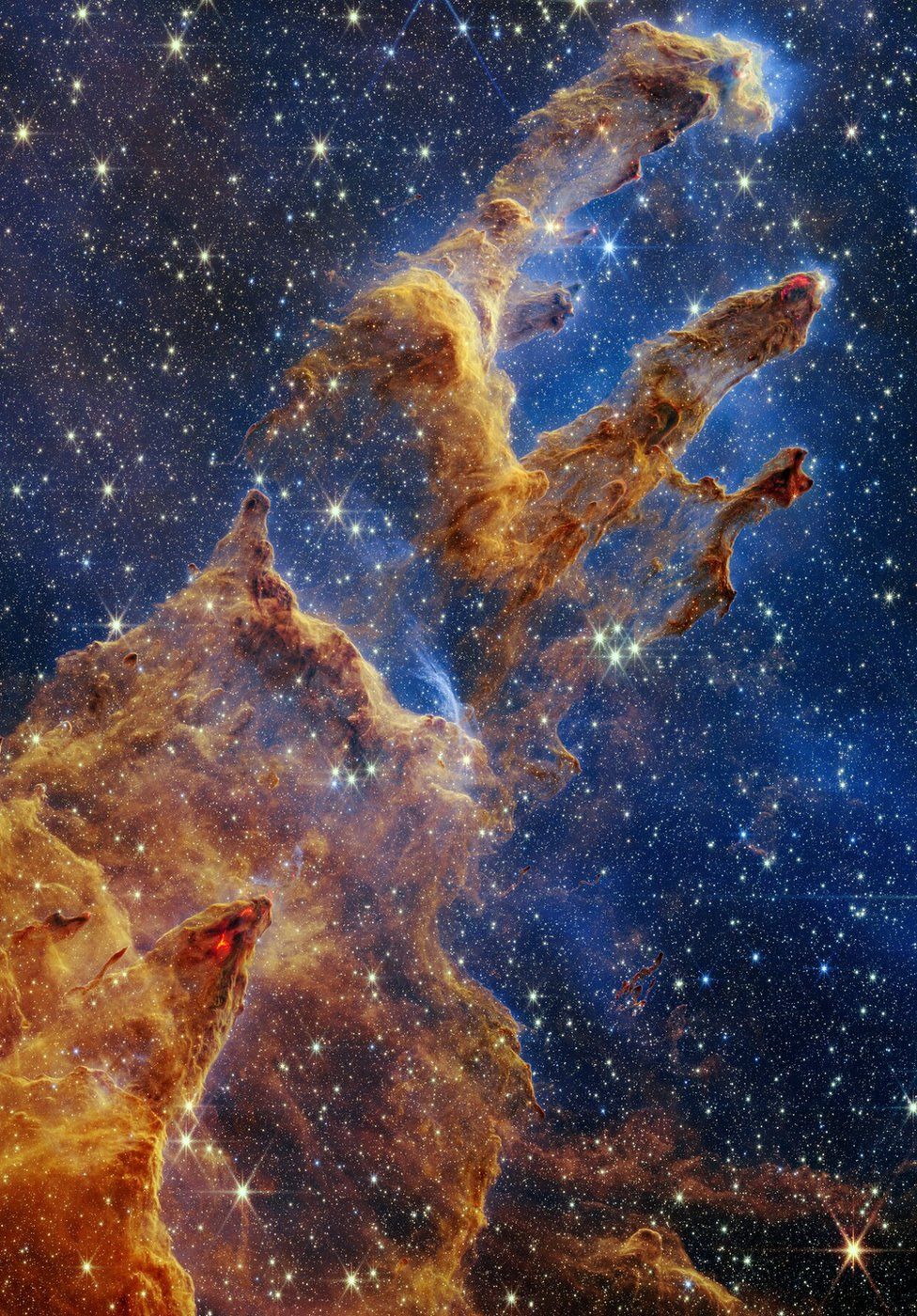ARTICLE AD BOX
 Image source, NASA/ESA/CSA/STScI
Image source, NASA/ESA/CSA/STScI
Webb's view: The pillars are cool, dense clouds of hydrogen gas and dust
By Jonathan Amos
BBC Science Correspondent
It's a classic - one of the most beautiful sights in the cosmos and now the new super space telescope James Webb has visited it anew.
The so-called "Pillars of Creation" are cool, dense clouds of hydrogen gas and dust in the Serpens constellation, some 6,500 light-years from Earth.
Every large telescope has imaged this scene, most famously the Hubble observatory in 1995 and 2014.
James Webb has given us yet another incredible perspective.
The pillars lie at the heart of what astronomers refer to as Messier 16 (M16), or the Eagle Nebula. This is an active star-forming region.
Webb, with its infrared detectors, is able to see past much of the light-scattering effects of the pillars' dust to examine the activity of the new-born suns.
"I've been studying the Eagle Nebula since the mid-1990s, trying to see 'inside' the light-years long pillars that Hubble showed, searching for young stars inside them. I always knew that when James Webb took pictures of it, they would be stunning. And so they are," Prof Mark McCaughrean, the Senior Advisor for Science at the European Space Agency, told BBC News.
Image source, STScI
Image caption,Hubble (L) and Webb (R): The new telescope's infrared detectors can see past more of the pillars' dust
The M16's pillars are being illuminated and sculpted by the intense ultraviolet light from massive nearby stars. That radiation is also dismantling the towers.
Indeed, if you could magically transport yourself to this location today, the pillars are very probably no longer there.
We only see them because we're looking at them in the past. The light that Webb detects has taken 6,500 years to reach its mirrors.
James Webb is a collaborative project of the US, European and Canadian space agencies. It was launched in December last year and is regarded as the successor to the Hubble Space Telescope.

 2 years ago
55
2 years ago
55








 English (US) ·
English (US) ·